- Home
- Who was Ronald Barnes?
Who was Ronald Barnes?
Ronald Montague Barnes (June 11, 1927 – November 3, 1997) was a major force in establishing a North American approach to the art of the carillon. His numerous compositions and arrangements for the instrument altered the standard of the modern carillon repertoire, not only in North America but throughout the world.
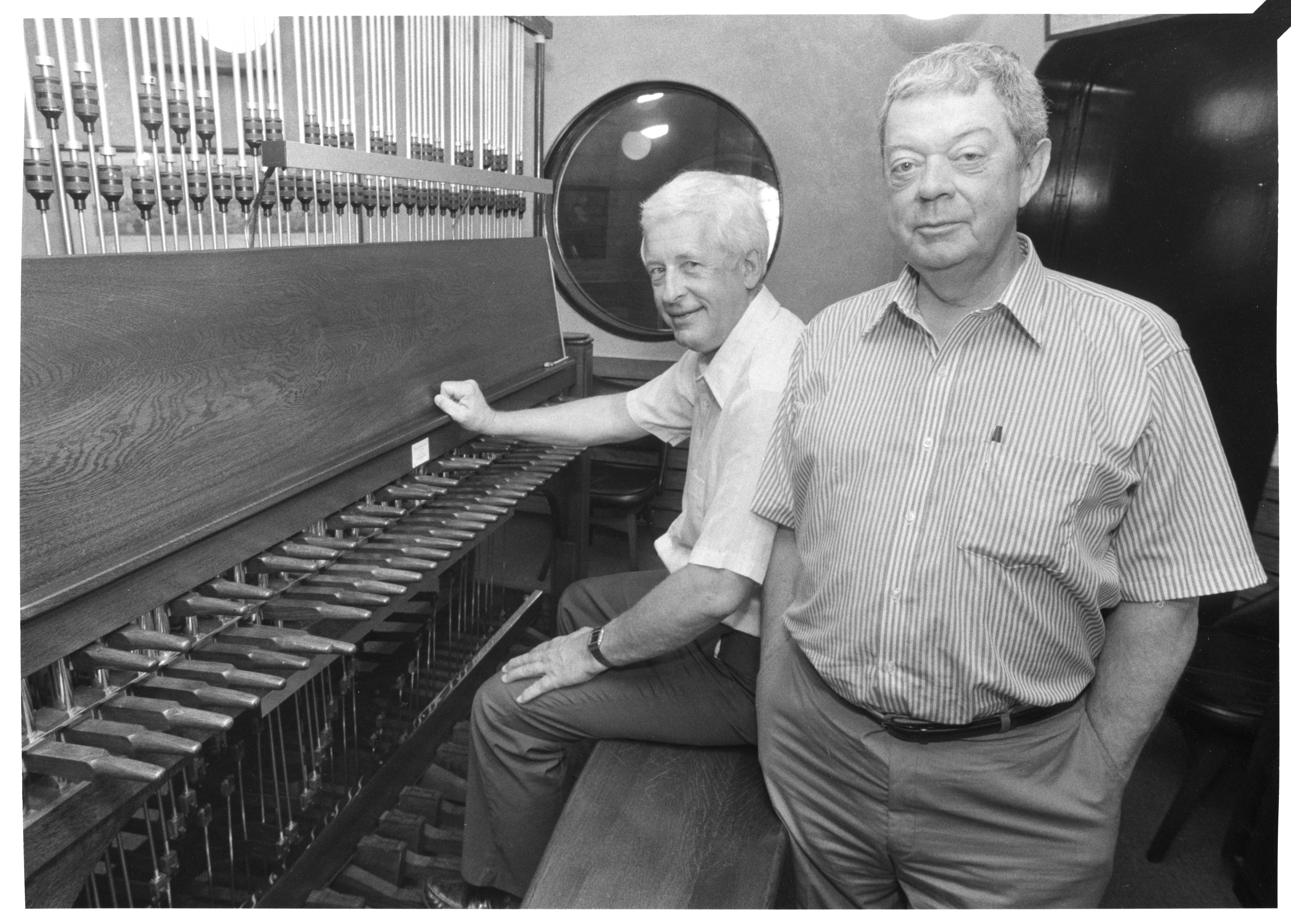
Ronald Barnes (right) with his contemporary and perhaps first student Milford Myhre (Credit: Anton Brees Carillon Library)
Barnes remembered first encountering a carillon at the age of four. His parents took him to hear Anton Brees play the dedication recital of the new carillon at First-Plymouth Congregational Church in his hometown Lincoln, Nebraska.
In 1946 at the University of Nebraska-Lincoln, Barnes was studying organ with Myron Roberts, the organist at First-Plymouth. Roberts encouraged Barnes to consider learning carillon, since the player of the church's worn-down instrument had moved away. Knowing nothing about carillons, he and his brother cleaned and repaired it as best as they could. Having no carillon music, he started out playing scales, much to the delight of his community. The smallest bells hadn't been played in so long that many had forgotten they were there.
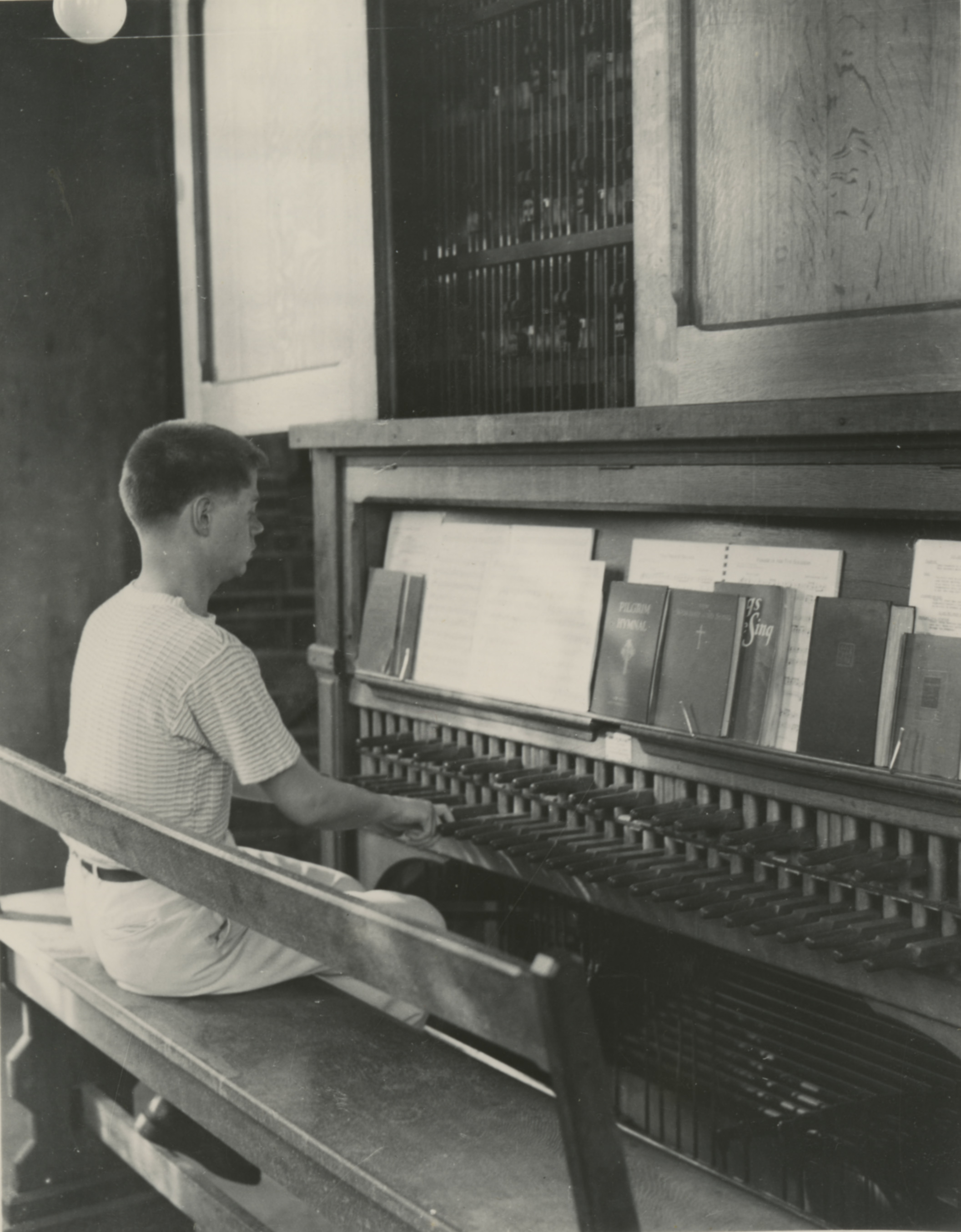
Barnes began playing the carillon at First-Plymouth Congregational Church (Credit: Anton Brees Carillon Library)
According to Roberts, Barnes had a "natural affinity for the bells." Barnes attended the 1948 GCNA Congress, where he met trained players, joined the organization, and passed the Carillonneur Exam. He spent the rest of the summer studying in Ottawa with Dominion Carillonneur Robert Donnell at the Peace Tower, which proved to be his only formal education in carillon. Upon his return to Lincoln, he was appointed the assistant organist and the carillonist of First-Plymouth.
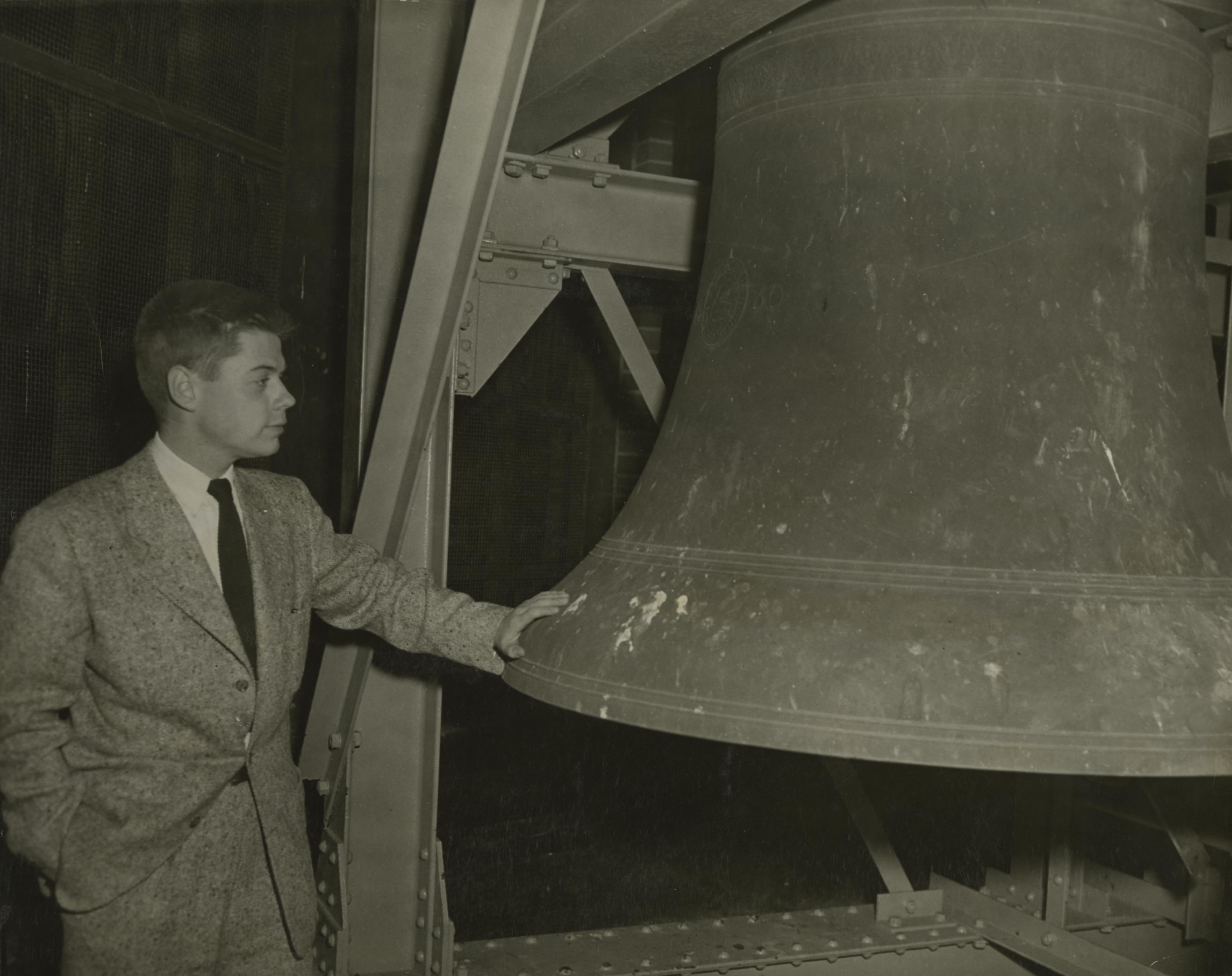
Barnes was the carillonneur of First-Plymouth from 1948 to 1951 (Credit: Anton Brees Carillon Library)
At just 25 years old, Barnes accepted a job playing the carillon at the University of Kansas (KU) in 1951. It was through this carillon's heavy, sonorous Taylor-made bells that Barnes developed his approach to writing music for the carillon. Over the next 12 years, he convinced many of his KU peers, now celebrated composers, to write music for carillon. These included Roy Hamlin Johnson, John Pozdro, and Gary C. White.
Barnes was Cathedral Carillonneur at Washington National Cathedral from 1963 to 1974 and University Carillonist at the University of California, Berkeley, from 1982 to 1995. His Berkeley tenure was marked by founding the Berkeley Carillon Institute, establishing a carillon performance curriculum, and composing more than 40 works for carillon. He was awarded the Berkeley Medal for distinguished service to the carillon in 1982.

Barnes in 1982 at Bok Tower Gardens (Credit: Anton Brees Carillon Library)
Besides his musicianship, Barnes contributed greatly to the research of the carillon art. He studied several early carillon music manuscripts, including the re-pinning book of Théodore De Sany, the notebook of André Dupont, and the carillon preludes of Matthias Vanden Gheyn, and published new editions of their music. He was a consultant to important carillon installations and, through his many articles, worked to set new standards for quality of performance, choice of repertoire, and sophistication in design and construction of carillons. For a period he also embarked on a self-supporting career of publishing and selling his own whimsical sketches of mythical carillons and organs interspersed with animals and people.
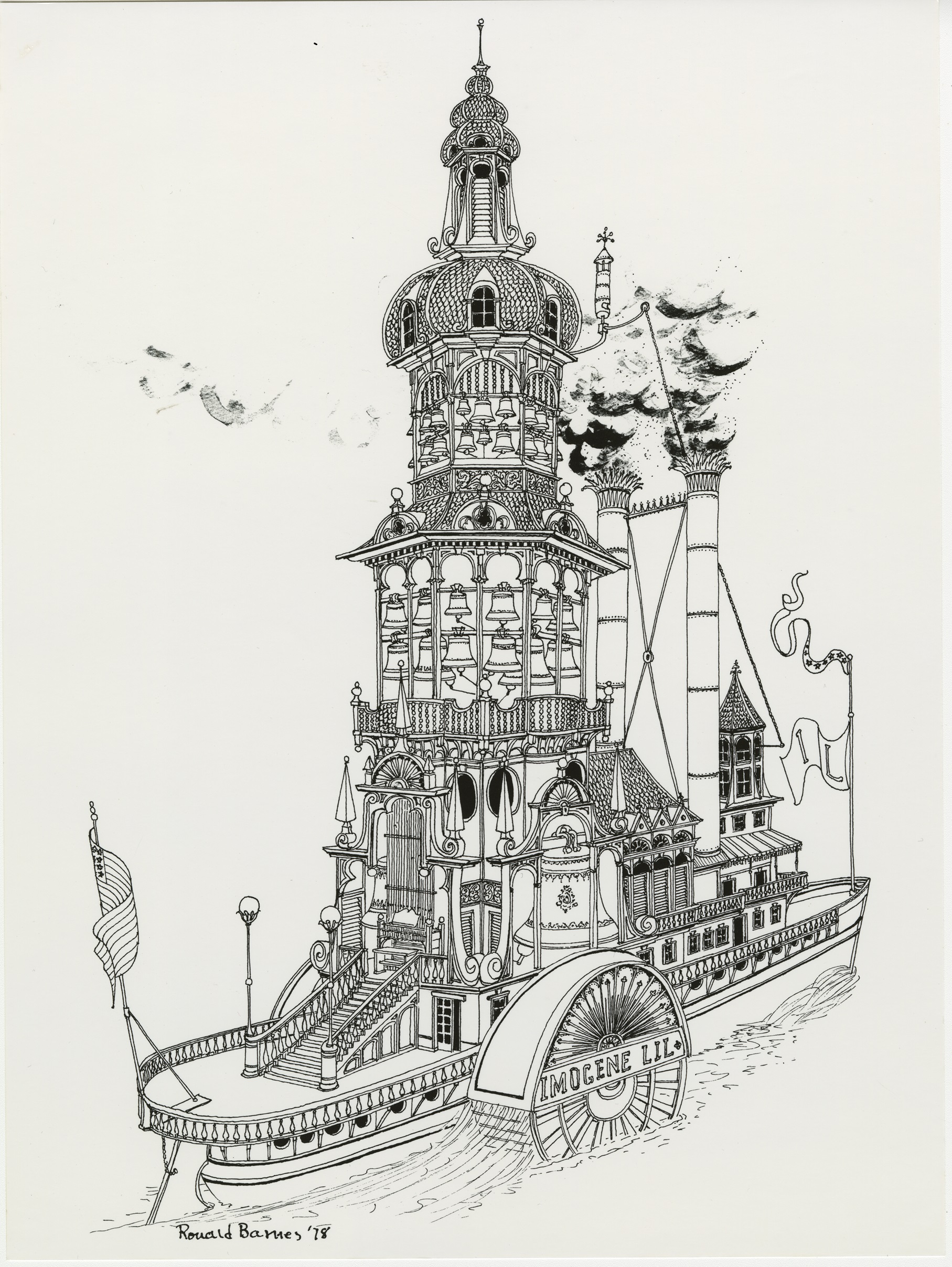
Barnes drew fantastical depictions of carillons, such as this Mississippi riverboat traveling carillon (Credit: Anton Brees Carillon Library)
A major figure in the GCNA, Barnes served in several roles over the course of many decades. He was the editor of 9 issues of the Bulletin, editor of music publications, archivist, adjudicator of carillonneur exams, Vice-President for 4 terms, and President for 3 terms. He also hosted the 1956, 1964, and 1988 GCNA Congresses. In 1988 he was awarded the GCNA's Certificate of Extraordinary Service and in 1995 he was elected an honorary member.
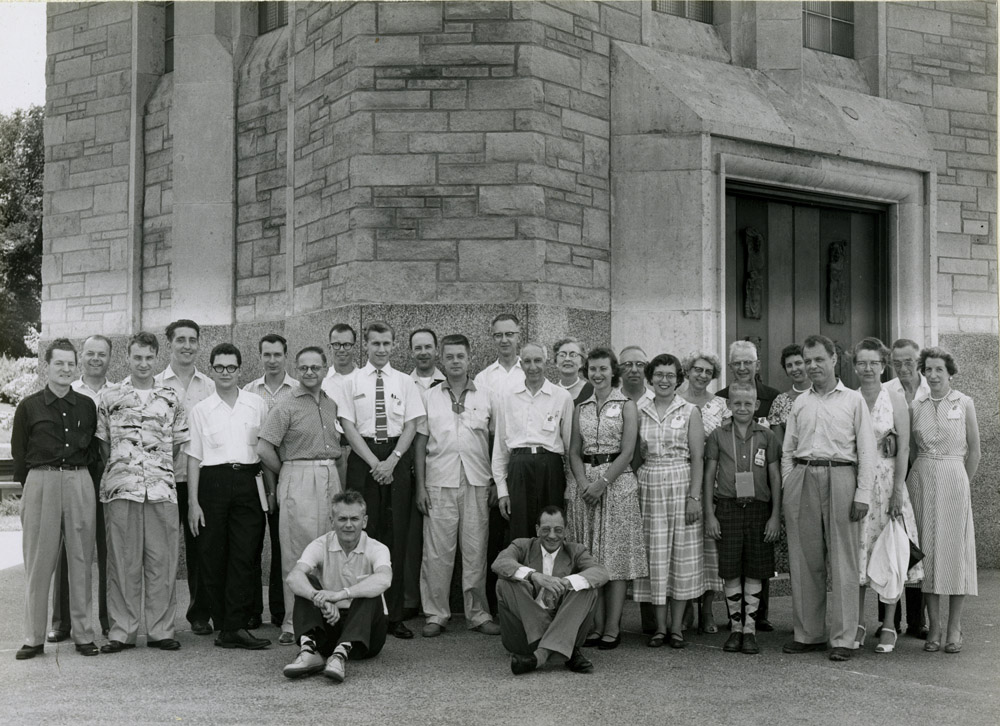
Barnes (standing center) hosted the 1956 GCNA congress at the University of Kansas (Credit: Anton Brees Carillon Library)
Barnes was a humorist who loved to laugh. He enjoyed telling jokes, witty stories, and actual anecdotes. He was a frequent traveler to Mexico and was an avid learner. He had a brilliant way with words and an excellent memory for detail. As a gay man, he is a role model for the LGBTQ community. In his long career, many of his colleagues came to call him a good friend. Today, carillonneurs all over the world see him as an example of professional excellence in the carillon art.
Following Barnes's death from leukemia at age 70, an anonymous benefactor and acquaintance of Barnes proposed that the GCNA establish a memorial grant in his memory, restricted to the study of the North American carillon art for North American applicants. We accepted the proposal and established the Ronald Barnes Memorial Fund in 1998.
Thanks to the generosity of the anonymous benefactor and many other donors, the success of a years-long capital campaign, and the stewardship of the Board of Directors, the fund has grown considerably. Since the first grant cycle in 2007, the fund has helped more than 2 dozen North Americans pursue studies in carillon performance, composition, music history, and instrument design.
Study the carillon art
Contact us: info@gcna.org
Copyright © . All rights reserved.

